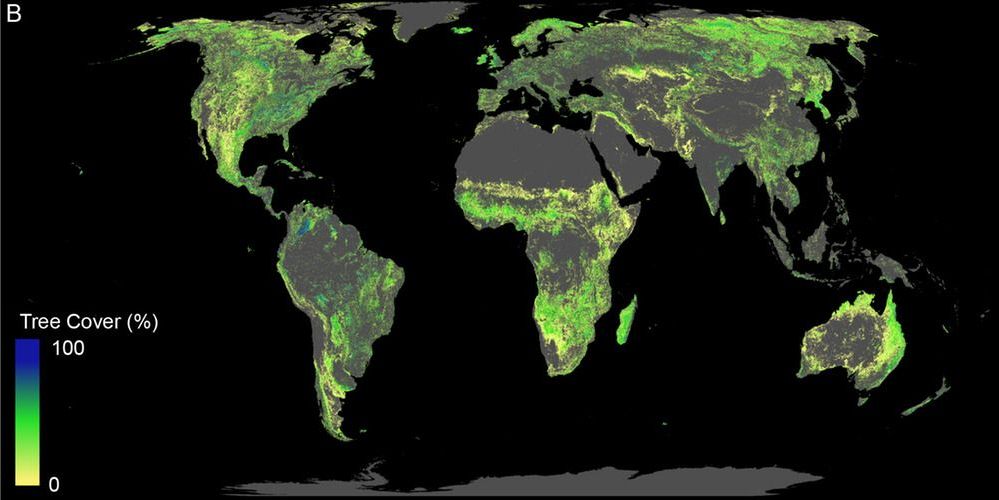Over-conservative climate scenarios mean we could face ‘world of outright chaos’, says analysis authored by former fossil fuel executive and backed by former head of Australia’s military.



While solar and wind power are rapidly becoming cost-competitive with fossil fuels in areas with lots of sun and wind, they still can’t provide the 24/7 power we’ve become used to. At present, that’s not big a problem because the grid still features plenty of fossil fuel plants that can provide constant baseload or ramp up to meet surges in demand.
But there’s broad agreement that we need to dramatically decarbonize our energy supplies if we’re going to avoid irreversible damage to the climate. That will mean getting rid of the bulk of on-demand, carbon-intensive power plants we currently rely on to manage our grid.
Alternatives include expanding transmission infrastructure to shuttle power from areas where the wind is blowing to areas where it isn’t, or managing demand using financial incentive to get people to use less energy during peak hours. But most promising is pairing renewable energy with energy storage to build up reserves for when the sun stops shining.
Prophet’s “Tempest” specialist weapon is an absolute MONSTER! Check it out!
● All Scorestreaks in Black Ops 3: https://youtu.be/6tPby0YoJA0
● Best Gun in Black Ops 3: https://youtu.be/XWG4XSutBj4
ElGato HD60 is the best capture card out there! http://e.lga.to/tmartn
Amazon Link: http://amzn.to/1uVW8NP
Improve your aim instantly! Use code “TMARTN” to get 10% off KontrolFreeks: http://bit.ly/tmartnkf
5% off Astro Headsets: http://youtu.be/myzgrHGYo0o
My YouTube: https://www.youtube.com/TmarTn
My Second Channel: https://www.youtube.com/TmarTn
My Twitter: http://www.twitter.com/TmarTn
My Facebook: http://www.facebook.com/TmarTn
My Website: http://www.TmarTn.com
ItsAllViral: http://www.itsallviral.com
If 150,000 volt stun guns aren’t enough to deter criminals, law enforcement might want to give Rob Flickenger a buzz.
The IT expert, who also has a bit of a reputation as a DIY mad-scientist, has a shocking new invention: a real-life lightning gun. Built over a period of at least 10 months, the zapper is the end result of combining the aim-and-shoot functionality of an aluminum-encased Nerf gun with the electrical power supplied by an 18V drill battery.
The gun, which some of you might have guessed, is essentially a weaponized version of a Spark Gap Tesla Coil. To generate a high-voltage discharge, Flickenger designed a system that channeled the power drill’s 18V of power into a ZVS driver circuit, which in turn drives a flyback transformer, thereby raising the voltage to about 20,000V. All of this is admitted pretty technical, so if you want a detailed explanation of how it works, check out his site Hackerfriendly.com, where he goes through the finer points of the technology.
There’s no way to store toxic coal waste that’s completely safe. There’s also no way to mine and burn coal that doesn’t threaten communities, our waterways and our climate. Duke needs to stop burning coal, clean up its toxic mess, and invest in abundant, affordable clean energy sources like solar and wind. #2048istoolate #BeyondCoal #YEARSproject with Sierra Club.

I call them “BATS”.
Can bacteria generate radio waves?
On the face of it, this seems an unlikely proposition. Natural sources of radio waves include lightning, stars and pulsars while artificial sources include radar, mobile phones and computers. This is a diverse list. So it’s hard to see what these things might have in common with bacteria that could be responsible for making radio waves.
But today, Allan Widom at Northeastern University in Boston and a few pals, say they’ve worked out how it could be done.


The El Niño-Southern Oscillation has been responsible for widespread, simultaneous crop failures in recent history, according to a new study from researchers at Columbia University’s International Research Institute for Climate and Society, the International Food Policy Research Institute (IFPRI) and other partners. This finding runs counter to a central pillar of the global agriculture system, which assumes that crop failures in geographically distant breadbasket regions such as the United States, China and Argentina are unrelated. The results also underscore the potential opportunity to manage such climate risks, which can be predicted using seasonal climate forecasts.
The study, published in Science Advances, is the first to provide estimates of the degree to which different modes of climate variability such as ENSO cause volatility in global and regional production of corn, wheat and soy. Such variability caused nearly 18 percent volatility in global corn production from 1980 to 2010, for example.
“Global agriculture counts on the strong likelihood that poor production in one part of the world will be made up for by good production elsewhere,” said Weston Anderson, a postdoctoral research scientist at the International Research Institute for Climate and Society and lead author on the study.

